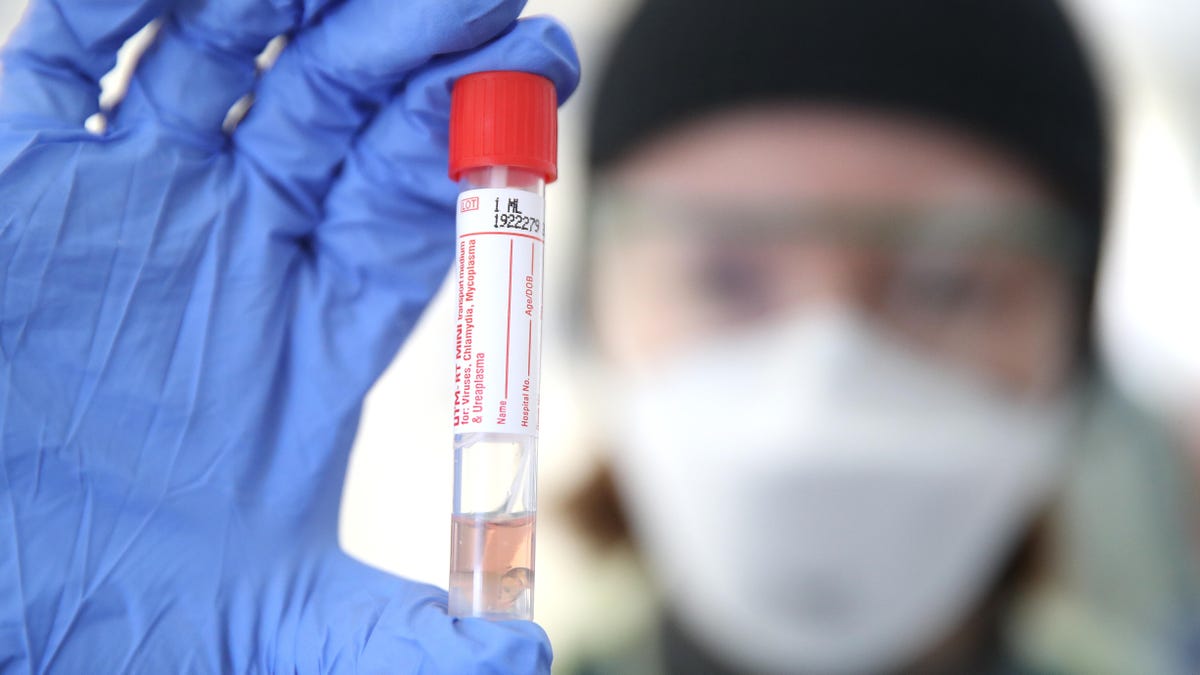Coronavirus test using CRISPR detects disease in under 40 minutes
The new diagnostic tool, Detectr, shows promise in rapidly detecting COVID-19.

A new diagnostic tool uses CRISPR to detect COVID-19.
As the coronavirus pandemic has worsened, reliable, accurate and speedy testing to detect COVID-19 has become one of the most important measures for controlling the spread and getting life back to (some semblance of) "normal". A new test, using the incredibly powerful gene editing tool known as CRISPR, developed by researchers at the University of California, San Francisco and biotech company Mammoth Biosciences, can tell if a patient is positive within 40 minutes.
The new method, published in the journal Nature Biotechnology on Thursday, is the first peer-reviewed publication showing CRISPR as a viable diagnostic tool for COVID-19. The CRISPR-based system is known as "Detectr" and could reduce testing times from around five hours down to 40 minutes.
CRISPR is often described as "a pair of molecular scissors", because it is able to make accurate cuts to DNA. To do so, it utilizes a guide and an enzyme which can be manipulated to seek out specific DNA or RNA. It's like a ballistics missile for genetic sequences: You punch in coordinates and CRISPR hones in on it, ready to cut.
SARS-CoV-2, the coronavirus that causes COVID-19, is an RNA virus. By programming the CRISPR-system to seek out two genes in SARS-CoV-2, the research team showed they could guide their system to recognize the coronavirus in patient samples. The results can be viewed on a lateral flow strip, a device that shows a simple line marking for a positive result -- like a pregnancy test might.
In 40 samples confirmed positive by the CDC, Detectr was able to find 38 positives. It incorrectly identified 2 as negatives, showing 95% agreement with CDC's current protocol. In an analysis of 42 negative samples, Detectr did not flag any as a false positive.
"The first results ... look good and encouraging," says Gaetan Burgio, a geneticist at the Australian National University in Canberra. "Overall, it has a potential."
The major advantage Detectr has over the CDC's current method is speed. Both tests require the same sample from patients: A swab from the nose or the throat. But the CDC uses real-time polymerase chain reaction (RT-PCR) to test for coronavirus, which requires a bulky machine and takes around four hours to run. Detectr is able to be run on a machine about as big as a graphics calculator and utilizes a much faster method. However, it can't perform as many concurrent tests as the CDC's protocol.
"There are some drawbacks," says Burgio. "The RT-PCR technique has the advantage of running 386 samples [at] once, which is not the case with this CRISPR method.
"This is not the method for testing 3,000 tests in a day."
The test also can't quite reach the same level of sensitivity seen in RT-PCR used by the CDC -- and there is still work to be done to ascertain its suitability for larger implentation and FDA approval, Burgio notes.
One of the key concerns with COVID-19 is the proportion of people who may harbor the virus, but show no symptoms of disease. Even though they feel fine, they may be able to spread the disease. Being able to capture this population in testing and screening is invaluable for determining where another outbreak may occur and a rapid, accurate test like this can aid such an effort.
The testing breakthrough is also significant for the Detectr system itself. Mammoth Biosciences have been working on developing the tool as a diagnostic device for a swath of diseases. If another infectious disease arises, the guide used in Detectr could be changed to recognize the new disease -- providing a system that can be reconfigured for emerging diseases within days.
Janice Chen, CTO of Mammoth Biosciences, says the company is working with UCSF to "fast-track" the Detectr test for FDA approval by using the "Emergency Use Authorization process".

